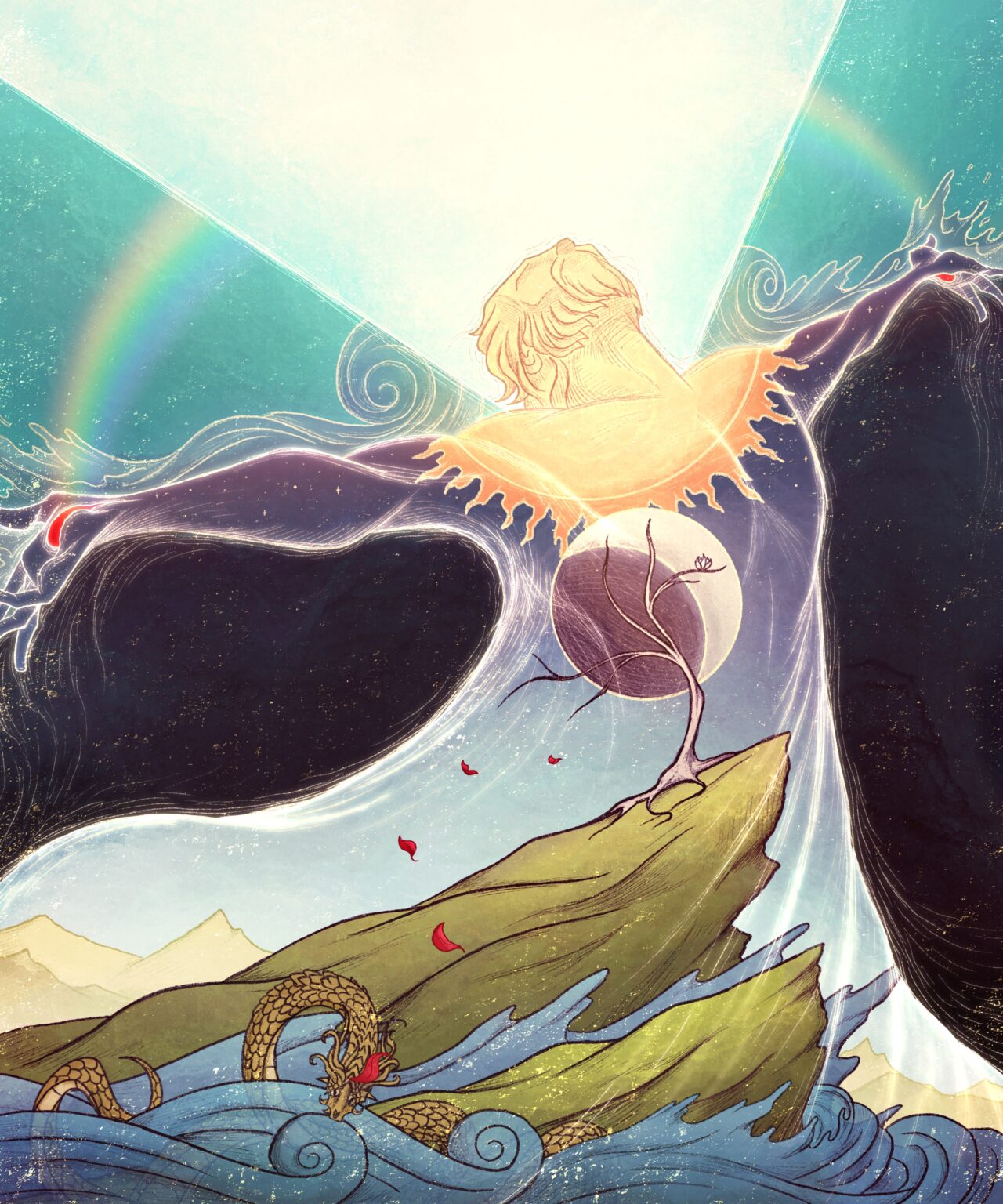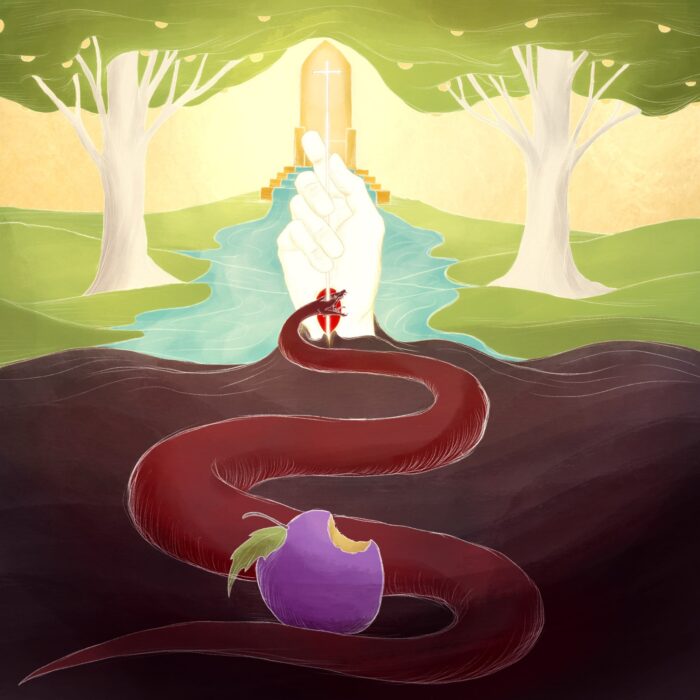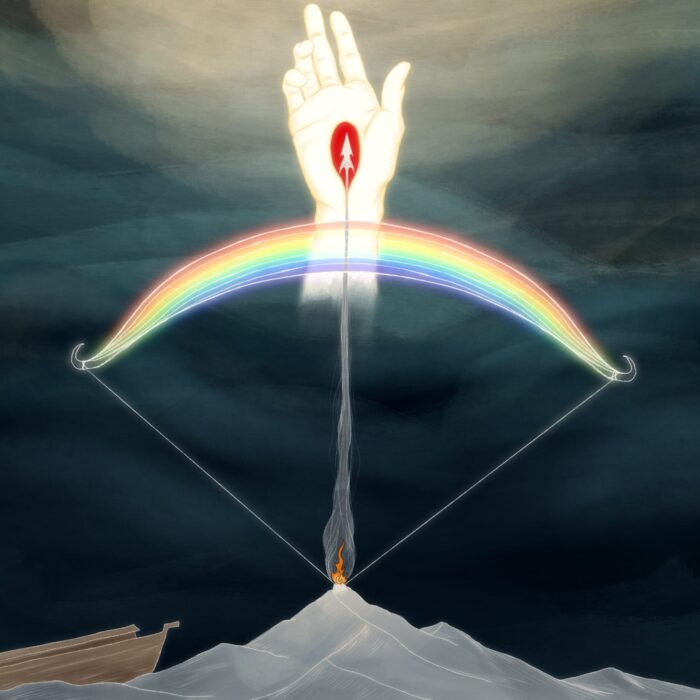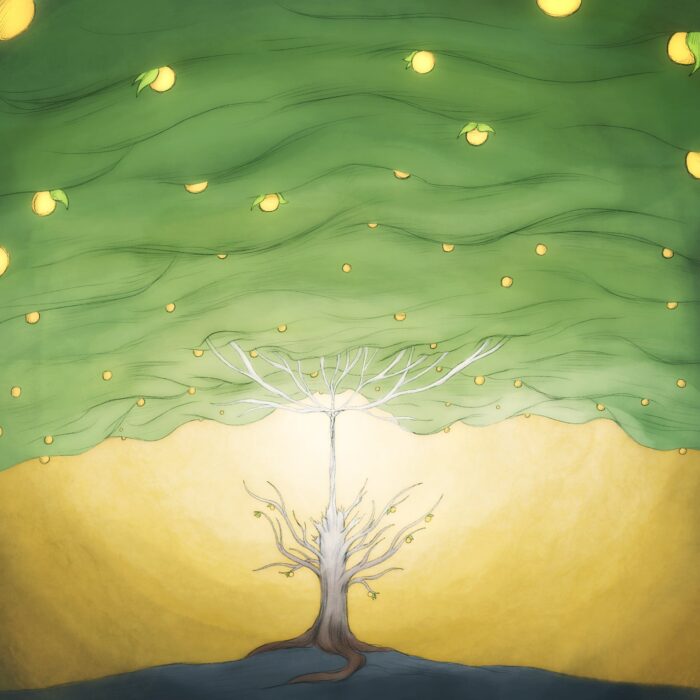Here’s a new piece based on the Creation account in Genesis 1. The New Testament teaches us that all things were created in, are sustained by, exist for, and are communicative of the crucified and risen Jesus Christ (Col.1:15-17). I’ve tried to visually exegete that vision of cosmological origins in this image.
I made this picture for @missiondao , who will be turning it into an NFT to support missions work both in the real world, and in the metaverse — I’m honored and excited to be a small part of the work they’re doing! If you’re interested in this sort of work, definitely check out their profile.
Finally, a brief explanation of the image:
Day 1: The creation of light is depicted in the outlines of Christ Himself, who is the Light, the division of light and darkness is seen in the negative space around his body.
Day 2: The waters above and waters below — the fact that the waters above are divided will be explained on the 7th day.
Day 3: The appearance of land on the 3rd day is shown in the rising continents, whose motion echo Christ’s posture as the one who rose up from the abyss of our death on the 3rd day. The tree represents the cross, and the five red petals picture the five wounds of Christ, while the five-pedaled blossom on the tree’s highest branch anticipates the transfiguration of those wounds through resurrection.
Day 4: The sun, moon, and stars. The sun forms a halo around Christ’s head, referencing Him as the True Light of the world (Jn 8:12) of whom the sun is only a shadow, as well as the True Center of all things. The crescent of the moon visually echoes the rolling away of the stone from the mouth of the tomb, this alludes to the resurrection of the crucified Lord.
Day Five: The Leviathan beneath the waves depicts the creation of the sea beasts on the fifth day. Traditionally, sea beasts represent opposition to God and His purposes, but the fact that God Himself created these creatures shows that He rules over all opposition to Himself. The fifth red petal rests on the leviathan’s head, picturing Christ’s victory over Satan—‘that ancient serpent’—through His death on the cross.
Day six: The creation of Humanity in the image of God is shown in the image of Jesus Himself. Jesus—crucified and risen—IS the image of God (Col.1:15), and it was in *His* image that Adam and Eve were created. Christ’s arms are extended in the form of the cross because it is in His death that He reveals God, so becoming the perfect image of God and thus the True Human. However, this same cruciform posture may be interpreted as a posture of exultant joy, because the crucified one is risen, and He has shown that the death of perfect obedience to God is the path of True Life and joy in God.
Day Seven: The Sabbath rest of Human kind in the presence of God and God with Human kind is depicted in Christ’s own posture of joy as the crucified one who is now raised, never to die again. The waters above the heavens are divided around the head of the Risen Lord as a way of showing that He leads His people through the True Flood (and the True Red Sea) of God’s wrath against Sin and brings them—like the True Noah and True Moses—into the promised rest of fellowship with the Living God. The rainbow that rises from the wounds in His hands represents the Eternal Covenant of Peace between God and Humanity that is inaugurated through Christ’s Passion. Finally, Jesus lifts His eyes in joy toward the top of the image and His head is surrounded by a triangular light. This shows two things: 1) that in Christ’s death and resurrection, the true rest of abundant life is opened to humanity (note that the two extending lines of the triangle will never touch, this visually represents the ever-expanding nature of life in Christ), and 2) the triangular form represents the Triune God who is revealed to humanity in Christ’s death and resurrection, and who is Himself the context of the True Rest into which Christ enters as a Human being, and so into which He gathers all those who trust in Him.




